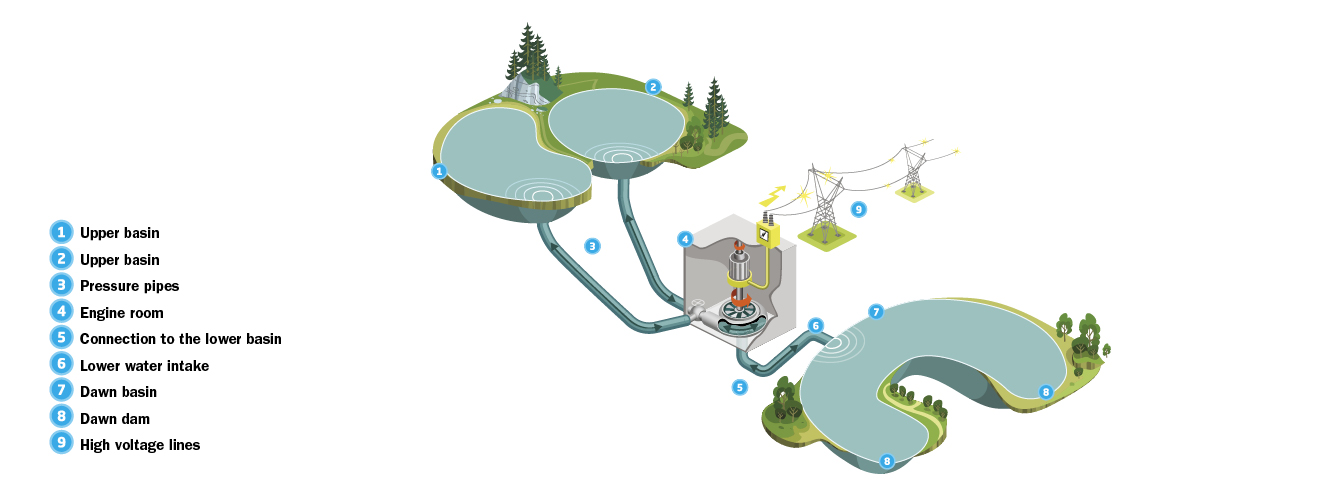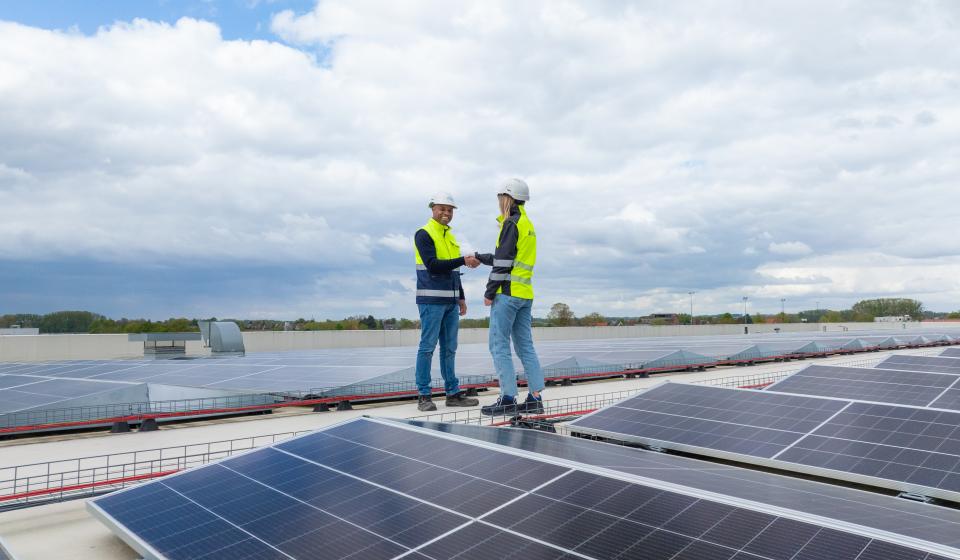Coo pumped storage power station
Pumped storage is currently the only way to store electricity on a large scale. In Belgium, the Coo station is therefore essential for the balance on the grid. The turbines can be started up at any time to offset a sudden drop in generation or to absorb excess electricity. As such, when demand is too low Coo stores the power generated elsewhere to restore it during peak consumption times.
An extension project of Coo is ongoing at the moment. More information about the power station's extension project [FR].
A clean and beneficial technology
- Easy to modulate the power generated according to fluctuations in demand
- Practically instant energy reserves in the event of a disruption on the grid
- Can be launched quickly (in just a few tens of seconds)
- Balances unplanned renewable generation (wind power, solar power)
- Clean source of energy that does not consume water or require combustion
- Limited impact on the environment owing to the fact that most technical facilities are located underground
Did you know: when running at full capacity, the Coo power station can provide 1,089 MW for six hours, as much as a nuclear unit but with a start-up time of under two minutes.
How does Coo pumped-storage station work?

- The flowing water turns a turbine which then turns a The generator transforms the turbine’s mechanical energy into electricity. Coo’s units are reversible and can function as turbines or pumps.
- During times of low demand for electricity, the water is pumped to the upper reservoirs.
- During peak periods, the water is then poured into the lower reservoir via the machine room housing the turbines and generators that generate the electricity. The equivalent of 10 Olympic swimming pools can flow through here per minute! The overall yield of the power station is 75%, meaning that 75% of energy extracted during off-peak hours is restored during peak hours.
